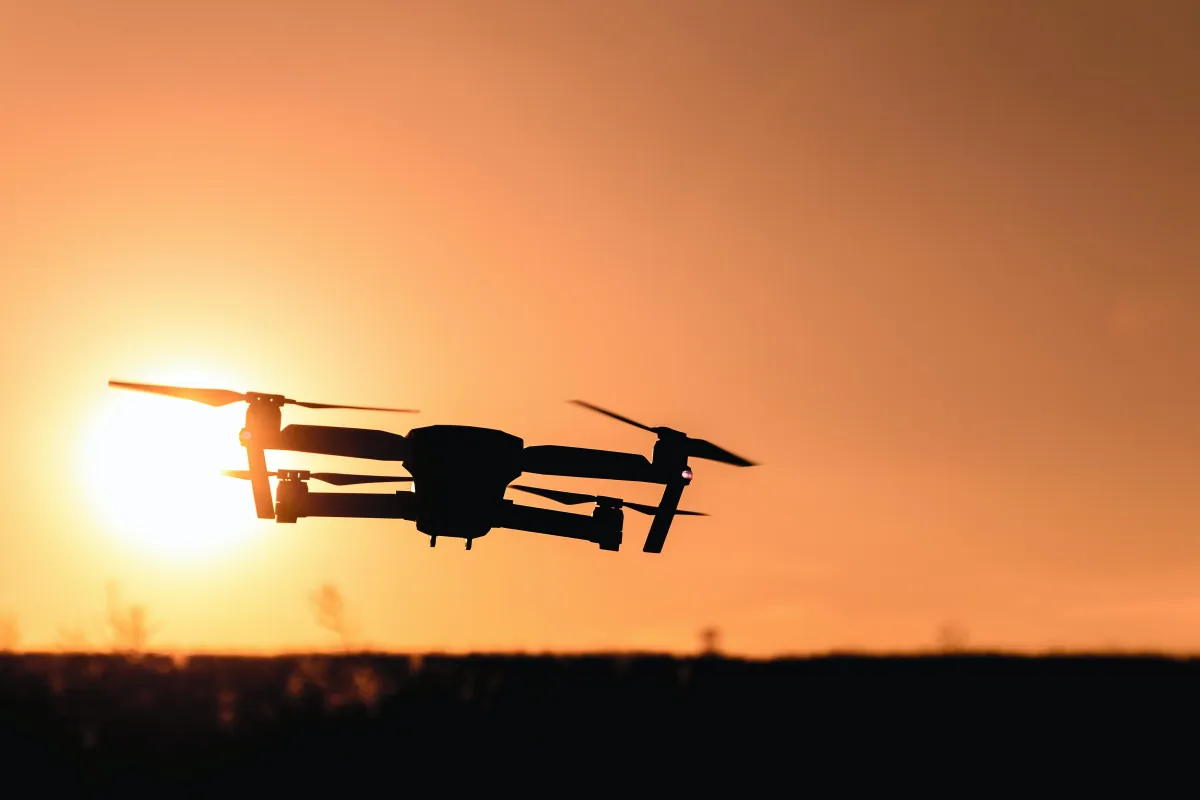
Drone Types: Explore the Sky's Limit with Cutting-Edge UAVs
As a drone enthusiast, I'm excited to share my knowledge about the various drone types available in the market today. Drones have become incredibly popular due to their versatility and wide range of applications. Whether you're a beginner exploring the drone world or a professional seeking specialized equipment, understanding the different drone types is crucial in making an informed decision.
Introduction
Drones, alternatively termed unmanned aerial vehicles (UAVs), have brought a revolutionary impact on various industries and recreational pursuits. These aerial devices are equipped with advanced technology, enabling them to perform tasks autonomously or under remote control. From capturing breathtaking aerial photography to assisting in search and rescue missions, drones have become indispensable in many sectors.
Understanding Drones
Definition of a Drone
A drone is an unmanned aircraft, lacking a human pilot on board. It is controlled either manually by a remote operator or autonomously through pre-programmed flight plans. Drones are equipped with various sensors, cameras, and navigation systems to perform specific tasks efficiently.
Evolution of Drones
Over the years, drones have evolved significantly, both in terms of technology and design. What started as military and surveillance devices have now expanded into consumer and commercial markets. Today, drones are smaller, more affordable, and packed with advanced features that cater to different user needs.
Importance of Drones
Drones have emerged as powerful tools with numerous applications. They have transformed industries such as photography, filmmaking, agriculture, and logistics. Drones can reach areas that are difficult or dangerous for humans, providing valuable data, surveillance, and support in various fields.
Classification of Drone Types
Drones can be classified based on different criteria, including size, purpose, design, functionality, and application. Let's delve into a few of the typical types:
Drone Types Based on Size and Purpose
Mini Drones
Mini drones, also known as nano drones or micro drones, are compact and lightweight. They are perfect for beginners and indoor flying due to their small size and maneuverability. These drones are often used for recreational purposes and offer a great entry point for drone enthusiasts.
Hobbyist Drones
Hobbyist drones are designed for recreational use and are larger than mini drones. They typically feature advanced flight controls, built-in cameras, and longer flight times. Hobbyist drones are a popular choice for aerial photography and videography enthusiasts who want to capture stunning aerial footage.
Professional Drones
Professional drones, including follow-me drones, are designed with advanced features, such as higher-quality cameras, longer flight times, and enhanced stability. These drones cater to photographers, filmmakers, and content creators who seek professional-grade aerial imagery and videos. With greater control and customization options, these drones enable users to unleash their creativity and bring their vision to life.
Industrial Drones
Industrial drones are heavy-duty and specifically designed for commercial and industrial applications. They are equipped with specialized payloads for tasks such as aerial surveying, inspection of infrastructure, and monitoring crops. Industrial drones are built to withstand harsh environmental conditions and can be used in sectors like construction, energy, and agriculture.
Drone Types Based on Design and Functionality
Multi-Rotor Drones
Multi-rotor drones, also known as quadcopters, are the most common type of drones available. They feature multiple rotors (usually four or more) and are highly maneuverable. Multi-rotor drones offer stability, ease of control, and the ability to hover in place, making them suitable for aerial photography and videography.
Fixed-Wing Drones
Fixed-wing drones resemble traditional airplanes and have a winged design. They are more efficient in terms of flight time and can cover longer distances. Fixed-wing drones are often used in mapping, surveying, and agricultural applications, where extended flight durations and large area coverage are required.
Hybrid Drones
Hybrid drones blend the advantages of multi-rotor and fixed-wing designs, providing vertical takeoff and landing capabilities like multi-rotor drones, while seamlessly transitioning to efficient forward flight akin to fixed-wing drones. Hybrid drones are ideal for applications that require both vertical and horizontal maneuverability.
Drone Types Based on Application
Photography and Videography Drones
Photography and videography drones are specifically designed to capture stunning aerial imagery. They are equipped with high-resolution cameras, gimbals for stabilization, and intelligent flight modes. These drones allow photographers and videographers to capture unique perspectives and cinematic shots.
Racing Drones
Racing drones are built for speed and agility. They are lightweight, highly maneuverable, and designed to compete in drone racing events. Racing drones are equipped with powerful motors, specialized controllers, and first-person view (FPV) systems that provide an immersive racing experience.
Agricultural Drones
Agricultural drones, also known as agricopters, are used in farming and crop management. They can monitor crop health, spray fertilizers or pesticides precisely, and collect data for analysis. Agricultural drones help farmers optimize their operations, reduce costs, and increase crop yields.
Delivery Drones
Delivery drones are increasingly becoming favored in the logistics industry. They are designed to transport lightweight packages over short distances. Delivery drones offer faster and more cost-effective delivery options, especially in areas with challenging terrain or limited infrastructure.
Military Drones
Surveillance Drones
Surveillance drones act as vigilant observers on the modern battlefield. Outfitted with cutting-edge sensors and cameras, they acquire real-time intelligence, eliminating the need to endanger human lives. These drones quietly detect movement, pinpoint targets, and clandestinely monitor enemy actions, amplifying overall situational awareness.
Combat Drones
Combat drones, on the other hand, are armed UAVs deployed in conflict zones. They are remotely controlled aircraft armed with a diverse range of lethal weaponry. Their primary role is to execute precise strikes on targets, significantly mitigating risks to military personnel involved in ground combat.
Related read: Drone taxis, drone shows.
Factors to Consider when Choosing a Drone
When selecting a drone, several factors should be taken into consideration:
Skill Level and Experience
Consider your skill level as a drone pilot. Beginners should opt for easy-to-fly drones with intuitive controls and stability features, while experienced users can explore more advanced options.
Purpose and Intended Use
Identify your primary use for the drone. Whether it's aerial photography, racing, industrial applications, or recreational flying, choose a drone that aligns with your specific requirements.
Flight Time and Battery Life
The flight time and battery life of a drone determine how long it can stay in the air before needing to recharge. Longer flight times are beneficial for capturing extensive footage or completing complex tasks.
Camera Quality and Gimbal Stabilization
If photography or videography is your focus, consider the camera quality and whether the drone has a gimbal for stabilization. Higher-resolution cameras and advanced stabilization systems result in better-quality aerial footage.
Range and Control
The range of a drone determines how far it can fly from the remote controller. Consider the range and control options to ensure it suits your specific needs, whether you require long-distance flights or close-range operations.
Budget and Cost
Set a budget for your drone purchase and consider the overall cost, including accessories, spare batteries, and additional equipment. Balance your budget with the features and capabilities you require.
Conclusion
Drones have become an integral part of our modern world, offering immense possibilities in various industries and recreational activities. Understanding the different drone types available is essential when making a decision based on your specific needs and interests. Whether you're a photography enthusiast, an aspiring racer, or an industry professional, there is a drone out there that can help you achieve your goals. Remember to consider factors such as size, purpose, design, and functionality, as well as your skill level and budget, when selecting the perfect drone for your needs.
FAQs
Q1: Are drones legal to fly?
Yes, drones are legal to fly in most countries, but regulations may vary. It's important to familiarize yourself with the local laws and guidelines regarding drone usage, such as airspace restrictions, registration requirements, and privacy considerations. Before you fly, it's recommended to check faa.gov. You can access restricted areas on their website B4UFLY in a desktop version. The B4UFLY app is available to download for free at the App Store for iOS and Google Play store for Android.
Q2: How long can drones typically fly?
The flight time of a drone depends on several factors, including battery capacity, drone size, payload, and flying conditions. Consumer drones usually have flight times ranging from 10 to 30 minutes, while professional and industrial drones can stay airborne for up to an hour or more.
Q3: Can I attach my own camera to a drone?
Some drones allow you to mount your own camera, while others come with built-in cameras. If attaching your own camera is important to you, ensure that the drone you choose has the necessary mounting options and compatibility.
Q4: Is a drone license required for flying?
In many countries, recreational drone pilots do not require a license for drones below a certain weight threshold. However, commercial drone pilots may need to obtain certification or licenses, depending on the nature of their operations. Ensure compliance by checking the regulations in your country.
Q5: Can drones fly in bad weather conditions?
Most drones are not designed to fly in adverse weather conditions such as heavy rain, strong winds, or snowstorms. It's important to check the manufacturer's guidelines and avoid flying in conditions that could compromise the safety and performance of the drone.
Remember to always fly your drone responsibly, respect privacy, and follow local regulations to ensure a safe and enjoyable drone flying experience. Happy flying!

Copyright © Drone Guide Central - All Rights Reserved 2024

